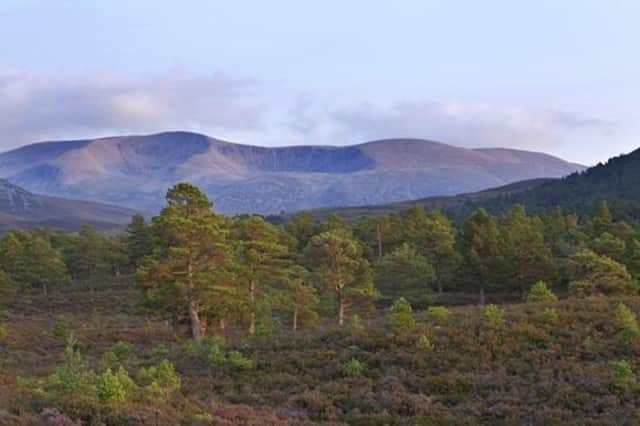National park on course to reach next zero


The new report also shows that the National Park will continue to sequester significant amounts of carbon from 2025 onwards, helping Scotland and the UK meet their 2045 and 2050 targets.
Independent carbon accounting specialists, Small World Consulting, have been commissioned by all 15 UK national parks to produce detailed greenhouse gas emissions assessments.
Advertisement
Hide AdAdvertisement
Hide AdThe report for the Cairngorms National Park, presented recently to the park’s board, shows that with fewer residents and visitors compared to other UK national parks, and far more capacity for carbon storage, it could reach net zero by 2025 following the targets set out in its Partnership Plan.
The climate crisis and the need to adapt to climate change and to reach net zero areglobally accepted priorities, guided by science, and the Partnership Plan and the ‘Heritage Horizons: Cairngorms 2030’ programme both set out clear targets to ensure that the national park reaches net zero and then becomes carbon negative, contributing to helping Scotland meet its commitments.
The Partnership Plan includes specific commitments to create a minimum of 35,000 ha of new woodland cover by 2045, restore a minimum of 38,000 ha of peatland, work with farmers and other land managers to encourage sustainable land management, and ensure that at least 50 per cent of the National Park is managed principally for ecological restoration by 2045.
Grant Moir, Cairngorms National Park Authority chief executive, said: “The positive carbon contribution that the Cairngorms National Park can make for Scotland in the future is a key element for us. We need to continue to look at all issues including soil carbon, reducing transport emissions and energy use in the National Park. We must ensure that as we go on this journey beyond net-zero that we adhere to the principle of a just transition and make sure that the people of the Cairngorms benefit from these changes.”
Advertisement
Hide AdAdvertisement
Hide AdMost greenhouse gasses emissions reporting is undertaken using a production-based methodology that takes account of all emissions that are directly produced within a geographic area. However, the Small World Consulting methodology is based on a consumption-based emissions model, which includes as complete a picture as possible of the climate impact of people’s lifestyles. This means that the indirect emissions that are embodied in goods and services consumed by residents and visitors within the National Park are also considered.
The report applies a scenario for reducing greenhouse gas emissions and scaling up carbon sequestrations based on national targets across multiple sectors of the economy and tied to the wide ranging land uses and land characteristics of the relevant national park.
The tailored targets for each area are then applied to show a hypothetical pathway to net zero and beyond. It combines ambitious reductions in emissions from energy, food, goods, visitor travel and from land use. The model assumes that all parts of society and relevant public bodies make the necessary changes required. The fact that land within the Cairngorms National Park can be managed to store carbon more effectively is central to the assessment.
Cairngorms National Park Authority Convener, Xander McDade said: “This assessment by Small World Consulting makes interesting reading and demonstrates the important role that the Cairngorms National Park has to play in helping the country to achieve net zero. The report also highlights many of the societal changes at a national and international level that are not within our control. We will rely on government putting in place the necessary tools to support those changes and for the relevant organisations to implement the changes within their control.
Advertisement
Hide AdAdvertisement
Hide Ad“The work we are already doing through the Park Plan and ‘Heritage Horizons: Cairngorms 2030’ – from peatland restoration and woodland expansion to active travel and future farming – will all help raise awareness and support the changes required to get to a low carbon future here in the Cairngorms and across the country.”